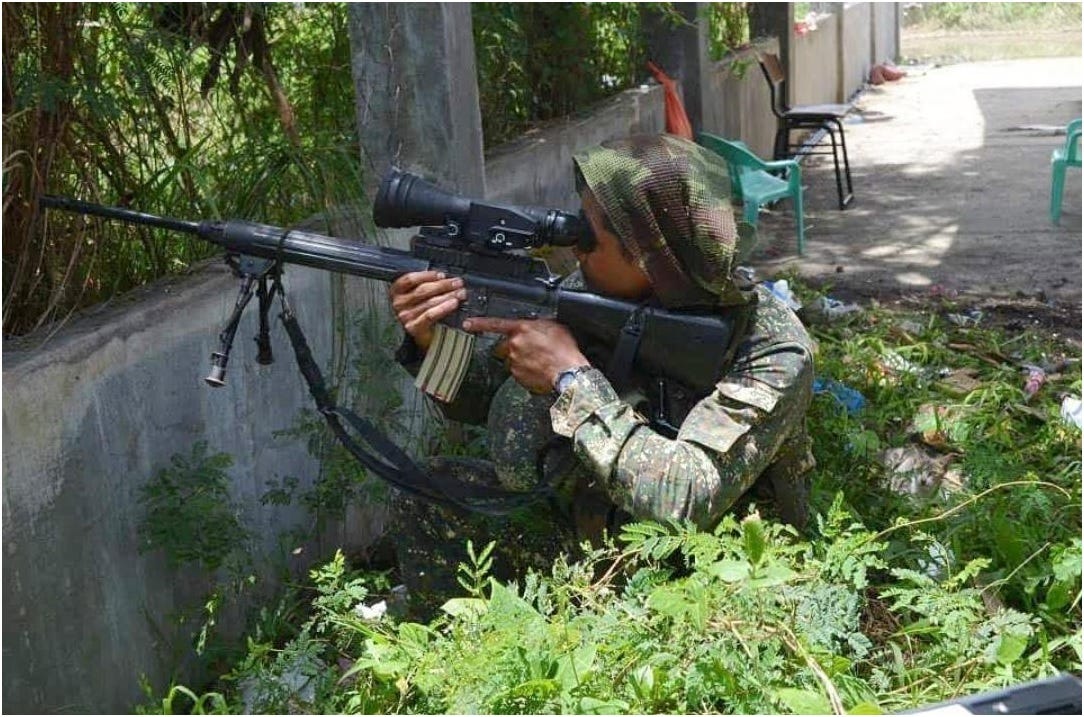A Sniper Waits for a Kill
Excerpts from the book "The Battle of Marawi"
By: Criselda Yabes
The following passage is reprinted from “The Battle of Marawi,” an exhaustive retelling by award-winning author Criselda Yabes of the battle for the Philippine city of Marawi on the island of Mindanao. Asia Sentinel also published a review of the book.
Golf-Three waited for four days before he gave the order to pull the trigger of his…
Keep reading with a 7-day free trial
Subscribe to Asia Sentinel to keep reading this post and get 7 days of free access to the full post archives.

